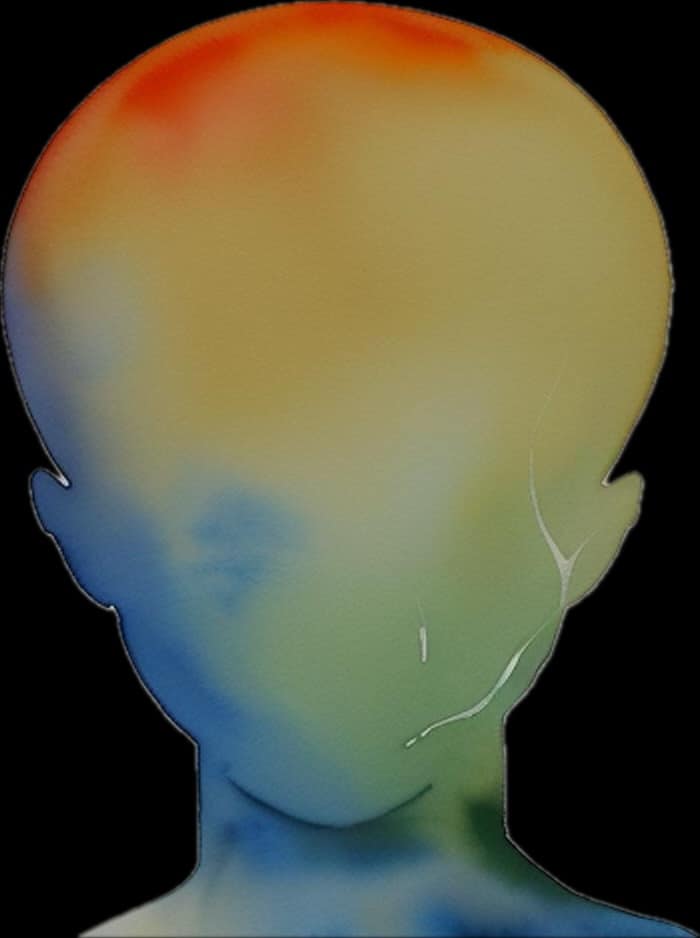
Postcataract known as posterior capsule opacification
Postcataract known as posterior capsule opacification (PCO), a question and answer.
Question
I had cataract surgery in right eye, 3 years ago. All was ok with follow up last month. Past weeks, my sigt in my right eye declined, and I had an appointment with doc, regarding the decline. The lense is troubled and shall be lasered next week…. what exactly is this and what are the risks?
Medical disclaimer: If you suspect that you have a health problem, it’s important to seek medical attention immediately. Treatment will depend on the type of affection and may involve antibiotics, antivirals, or other medications. In severe cases, surgery may be necessary to remove an abscess or relieve pressure on organs. This blog is informative.
Answer
It sounds like you’re experiencing a common condition known as posterior capsule opacification (PCO) following your cataract surgery, and your doctor has likely recommended a YAG laser capsulotomy to treat it. Let me explain what this is, why it happens, and what the procedure and risks involve.
What is Posterior Capsule Opacification (PCO)?
After cataract surgery, the natural lens of the eye is removed and replaced with an artificial intraocular lens (IOL). However, in some cases, the thin membrane (called the posterior capsule) that holds the IOL in place can become cloudy or opaque over time. This happens when cells grow on the back of the capsule, causing vision to become blurred or hazy, similar to having another cataract.
PCO is quite common and occurs in about 20%–30% of patients within a few years after cataract surgery. It can develop months or even years later, and it can cause symptoms like:
- Blurred or cloudy vision
- Glare or halos around lights
- Reduced contrast sensitivity
- Difficulty with reading or other close-up tasks
What is a YAG Laser Capsulotomy?
A YAG laser capsulotomy is a simple, outpatient procedure used to treat PCO. Here’s a breakdown of the process:
- Non-invasive Laser Treatment: During the procedure, a YAG laser (a type of laser that emits short pulses of light) is used to create a small opening in the clouded capsule behind the intraocular lens. This allows light to pass through and reach the retina properly, improving your vision.
- Quick Procedure: The procedure typically takes just 5-10 minutes. Your eye will be dilated before the treatment, and you’ll be given eye drops to numb the eye.
- Immediate Results: Most patients notice an improvement in their vision within a few hours to a few days after the procedure.
Risks of YAG Laser Capsulotomy
While a YAG laser capsulotomy is considered very safe and is commonly performed, like any medical procedure, it does have some risks. However, serious complications are rare. Here are the potential risks:
- Increased Eye Pressure: Some patients may experience a temporary spike in intraocular pressure (IOP) right after the procedure. Your doctor may check your eye pressure a few hours after the treatment and may prescribe eye drops to manage this.
- Retinal Detachment: There is a very small risk (about 1% or less) of retinal detachment, where the retina pulls away from the back of the eye. This can occur weeks to months after the procedure and requires immediate medical attention. Symptoms include flashes of light, floaters, or a shadow across your vision.
- Inflammation or Swelling: Mild inflammation or swelling inside the eye can happen, but it’s usually temporary and can be treated with eye drops.
- Pitting of the Intraocular Lens: Sometimes the laser can slightly damage the intraocular lens itself, but this rarely causes vision problems.
- Macular Edema: A small number of patients may develop swelling in the central part of the retina (macular edema), which can affect vision. Again, this is treatable with medications if it occurs.
What to Expect After the Procedure
- Quick Recovery: Most patients recover very quickly after the YAG laser procedure. You can return to your normal activities the same day, although your vision may be blurry for a few hours due to the dilating drops.
- Follow-Up: Your doctor will usually schedule a follow-up visit to check on your vision and ensure there are no complications.
Benefits of YAG Laser Capsulotomy
- Non-invasive: There are no incisions or cuts involved.
- Quick and Painless: The entire process is quick, and you won’t feel any pain during the procedure.
- Improves Vision: The procedure is highly effective at restoring clear vision in most patients.
Questions to Ask Your Doctor
Before your YAG laser capsulotomy, you may want to ask your eye doctor:
- What are the chances of improved vision for my specific case?
- How soon after the procedure will I see results?
- What signs of complications should I watch out for?
- Will I need any follow-up treatment or medications after the procedure?
In summary, a YAG laser capsulotomy is a routine and effective treatment for the clouding of the lens capsule after cataract surgery. It carries very low risks and often provides quick and lasting improvements in vision. If you have any other concerns or questions before your procedure, don’t hesitate to discuss them with your ophthalmologist!
Are there natural remedies for clearing up opacification in the lens after cataract surgery
When it comes to clearing up cloudiness or opacification in the lens after cataract surgery—specifically posterior capsule opacification (PCO)—unfortunately, there aren’t any natural remedies or detox methods that can effectively clear the opacified lens. The cloudy layer that forms behind the lens is due to cell growth on the posterior capsule, which is a physical change that cannot be reversed or cleared away with natural treatments.
The YAG laser capsulotomy remains the most effective and reliable way to treat this condition. It’s non-invasive, quick, and typically provides immediate results by creating an opening in the opacified capsule to restore clear vision.
Why Natural Methods Don’t Work for PCO
The clouding in PCO results from cells that grow over the capsule that holds the intraocular lens (IOL) in place. This process is akin to scar tissue formation, where cells multiply and cause physical clouding. Because it’s a structural issue, no dietary change, supplement, or natural detox can dissolve or remove these cells.
Supportive Care for Eye Health
While there is no natural way to directly clear the cloudiness caused by PCO, you can support your overall eye health with some of the following methods:
- Antioxidant-Rich Diet: A diet rich in antioxidants may help prevent further eye health issues by reducing oxidative stress. Foods high in lutein, zeaxanthin, omega-3 fatty acids, and vitamins C and E are especially beneficial for overall eye health.
- Avoiding Eye Strain: Take regular breaks when doing close work and make sure your eyes are well-rested to maintain overall eye function.
- Hydration and Humidity: Keeping well-hydrated and using a humidifier can prevent dryness and irritation, which can complement the health of the eye tissues.
While natural methods won’t clear an opacified lens, taking these steps can still contribute to your eye health overall.
What exactly causes this cloudiness of the artificial intraocular lens (IOL)
The cloudiness you’re experiencing after cataract surgery is likely due to a condition called posterior capsule opacification (PCO). It’s a common occurrence and can happen months or even years after cataract surgery. Let’s break down what causes this condition and why it affects vision:
How PCO Develops
- Cataract Surgery and the Lens Capsule:
- During cataract surgery, the eye’s natural lens, which has become clouded, is removed and replaced with an artificial intraocular lens (IOL).
- The artificial lens is placed inside the lens capsule, a thin, transparent membrane that originally held the natural lens. This capsule helps keep the IOL in place.
- Cell Growth on the Capsule:
- In a healthy eye, epithelial cells naturally exist on the front part of the lens. During cataract surgery, most of these cells are removed along with the lens.
- However, some epithelial cells can remain within the capsule, particularly on the back part, known as the posterior capsule.
- Cell Migration and Opacification:
- Over time, these leftover cells can multiply and migrate to the back of the capsule, directly behind the IOL.
- This cell growth forms a layer of scar tissue or cloudy film on the posterior capsule, which then becomes opaque. This is why it’s sometimes referred to as a “secondary cataract,” although it’s not a cataract in the same sense as the original one.
- Impact on Vision:
- The clouded capsule scatters light as it passes through the IOL, resulting in blurred vision, glare, halos around lights, and difficulty with reading or other close-up tasks. The symptoms can mimic those of a cataract, even though the IOL itself remains clear.
Risk Factors for Developing PCO
PCO can happen to anyone after cataract surgery, but certain factors may increase the likelihood:
- Age: Younger patients are more likely to develop PCO than older patients, as they tend to have more active cell growth.
- Surgical Technique: Advances in surgical methods and IOL design have reduced the incidence of PCO, but no technique can eliminate the risk entirely.
- Type of IOL: Some modern IOLs are designed to reduce the risk of PCO by inhibiting cell migration, but these are not foolproof.
Why Natural Remedies Can’t Resolve PCO
Since PCO results from physical cell growth and scar tissue formation, it cannot be reversed or removed naturally. The cloudy layer is a physical obstruction to light, not something that can be detoxified or dissolved. Therefore, a YAG laser capsulotomy remains the most effective treatment because it physically creates an opening in the cloudy capsule, allowing light to pass through freely and restoring vision.
Let’s resume each aspect to provide a more comprehensive understanding
In essence, PCO is caused by the natural cell growth process within the eye post-surgery. The cells that remain on the capsule can proliferate, forming an opaque layer that blocks or scatters light. This is a common and treatable condition, and with a YAG laser capsulotomy, you can regain clear vision with minimal risks involved.
1. Detailed Breakdown of PCO Development
- Epithelial Cell Behavior Post-Surgery:
- When cataract surgery removes the natural lens, some epithelial cells from the front of the lens capsule remain. These cells are naturally programmed to repair and multiply, as they would for healing injuries.
- However, in the lens capsule, these cells have nowhere to go, so they begin to migrate and grow along the back (posterior) part of the capsule. This response is not due to an injury per se, but rather a residual cellular behavior that doesn’t recognize the presence of the artificial lens.
- Proliferation and Migration Patterns:
- The cells multiply in an attempt to cover the area as they would a wound, eventually creating a dense layer that causes cloudiness. This process can vary in speed, depending on factors like age and cellular activity.
2. Surgical Techniques and Modern Advances
- Preventive Approaches:
- During surgery, ophthalmologists often use specialized techniques to minimize the chance of PCO. One method is called capsulorhexis, where the lens capsule is precisely opened to ensure the IOL is well-centered and the remaining capsule is as smooth as possible.
- Surgeons also attempt to remove as many lens epithelial cells as possible during the surgery, using a process called polishing the capsule. However, some cells are always left behind, which can later cause PCO.
- Intraocular Lens (IOL) Design:
- Modern IOLs are designed with sharp edges or specific shapes that can help prevent cell migration. These designs act as a barrier that makes it more difficult for epithelial cells to spread across the posterior capsule.
- Certain hydrophobic acrylic IOLs are also more resistant to cell growth compared to other types of materials, reducing the incidence of PCO.
3. Risk Factors in More Detail
- Age and Cellular Activity:
- Younger patients often have a higher rate of cellular regeneration and activity, which leads to a greater likelihood of developing PCO. The process is slower in older individuals, whose cells tend to be less regenerative.
- Inflammation and Healing Response:
- Some individuals naturally have more intense healing responses, which can contribute to faster or more aggressive cell growth. Conditions that promote inflammation, like diabetes or autoimmune disorders, may also increase the risk of PCO.
4. YAG Laser Capsulotomy Process – A Closer Look
- How the Laser Works:
- The YAG laser emits a highly focused beam of light that is directed at the back of the lens capsule. It creates a tiny opening, which allows light to pass through unobstructed.
- Because the laser operates with high precision, it only targets the specific area needed to restore vision, leaving the rest of the eye structures untouched.
- Preparation and Recovery:
- You’ll be given eye drops to dilate the pupil and numb the eye, which makes the procedure painless. Afterward, your vision may be blurry for a few hours due to the dilation, but most people notice improved clarity in their vision by the end of the day.
- Follow-up visits are often scheduled to ensure there are no complications, such as increased eye pressure.
5. Benefits of Early Detection and Regular Follow-Ups
- Monitoring for PCO Development:
- Regular eye exams after cataract surgery help detect early signs of PCO, allowing treatment before symptoms significantly affect vision.
- PCO usually develops gradually, so regular follow-ups enable early intervention, preventing the condition from worsening and affecting daily activities.
- Early Detection of Other Eye Conditions:
- Routine check-ups also help monitor for other potential post-surgery issues, such as macular edema or retinal detachment, ensuring that any complications are addressed promptly.
6. Comparing Alternatives and Why They’re Not Effective for PCO
- Natural and Alternative Remedies:
- While dietary antioxidants and supplements are fantastic for overall eye health and can slow the progression of conditions like macular degeneration, they have no impact on existing cell growth on the lens capsule.
- Some patients try herbal treatments or alternative therapies, but these lack clinical evidence and are unlikely to penetrate the capsule or dissolve the cloudy cells.
- Why Surgery Remains the Only Effective Solution:
- Because PCO is a structural issue, it requires a physical solution. The YAG laser provides a minimally invasive way to permanently clear the visual pathway by directly removing the physical obstruction. Unlike other treatments, it is both immediate and long-lasting.
By understanding these aspects in detail, you can appreciate the importance of both modern surgical techniques and regular follow-ups. The technology used today significantly reduces the impact of PCO, making cataract surgery outcomes much more predictable and manageable over time. If you have any other specific questions or want further details, feel free to ask!
Wishing you all the best for your upcoming treatment and a speedy recovery to crystal-clear vision! Take care and stay awesome! 🌟👀
Create your own website
And learn how to monetize it
Heads up! If you’re looking to join Wealthy Affiliate, make sure you sign up using my referral link to get access to my personal coaching and all WA features."







